This insect is bigger than a bird—and it looks like it crawled straight out of a prehistoric nightmare.
Meet the Giant Weta, New Zealand’s heavyweight champion of the bug world. With some tipping the scales heavier than a sparrow, these ancient creatures aren’t just big—they’re jaw-dropping. Think armored cricket meets dinosaur leftovers.
They’ve been around since the age of the dinosaurs, and they wear that legacy like a badge of honor. Spiky legs, powerful jaws, and a body built to survive isolation on rugged island terrain.
Creepy? Maybe. Fascinating? Absolutely.
Giant Wetas aren’t just oversized oddities—they play a role in their ecosystem and carry a story millions of years in the making. Ready to step into their strange, spiny world? Here are ten wild facts that prove these giants are more than just a bug with a scary face.
Ancient Lineage
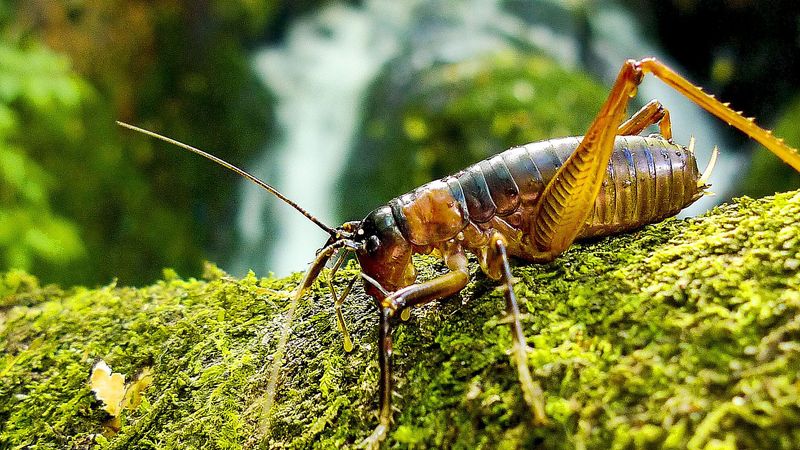
Imagine a creature that roamed the earth alongside dinosaurs. The Giant Weta has an ancestry dating back over 190 million years. They are living relics of the prehistoric world, offering scientists a window into the past.
Their survival over millennia showcases their incredible adaptability. Found primarily in New Zealand, these insects have thrived despite numerous ecological changes.
Protected in their native habitats, their ancient lineage continues to fascinate researchers and enthusiasts alike. This history underscores the significance of preserving their environment.
Impressive Size
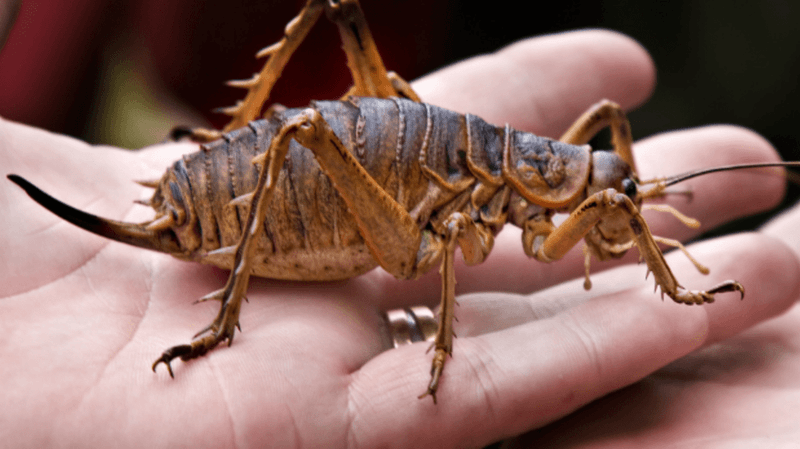
With a body length of up to 10 centimeters and weighing as much as a small bird, the Giant Weta is a heavyweight in the insect world. Their sheer size often surprises those encountering them for the first time.
These dimensions make them one of the largest insects on earth. The females are notably larger than their male counterparts, adding to their imposing presence.
Despite their formidable appearance, they are gentle giants, more interested in foliage than confrontation.
Unique Physiology
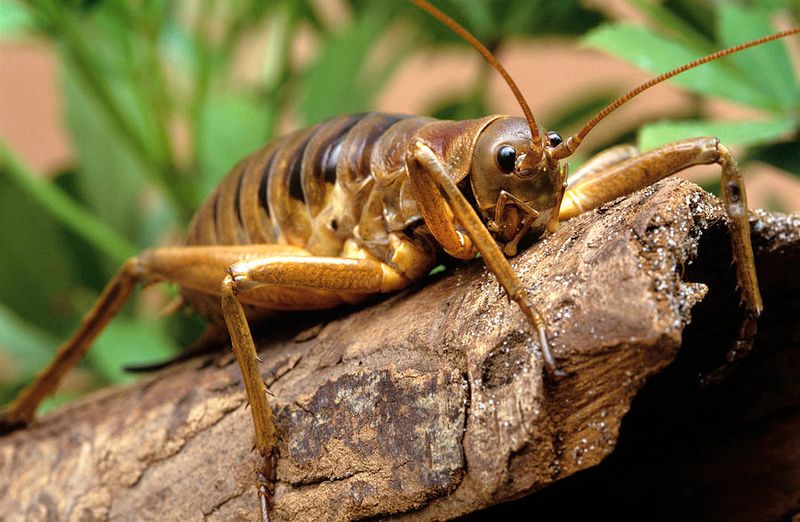
The Giant Weta’s physiology is as intriguing as its history. Equipped with powerful legs and large mandibles, they are built for survival. Their robust bodies are a testament to their resilience against predators and environmental challenges.
Their exoskeleton provides protection, while their sensory antennae are finely tuned for detecting changes around them. This combination of features ensures their place in the ecological hierarchy.
Their physiology not only supports their survival but also sparks curiosity in the scientific community, leading to ongoing studies and observations.
Habitat and Distribution

Nestled in the forests and caves of New Zealand, Giant Wetas inhabit some of the most pristine environments. Their distribution is mostly confined to remote, undisturbed areas, safeguarding them from human interference.
These insects favor habitats rich in vegetation, providing ample food resources. Their presence in such ecosystems is crucial, as they play a role in seed dispersal and as prey for native birds.
The conservation of their natural habitats is vital not only for their survival but also for maintaining ecological balance.
Dietary Preferences
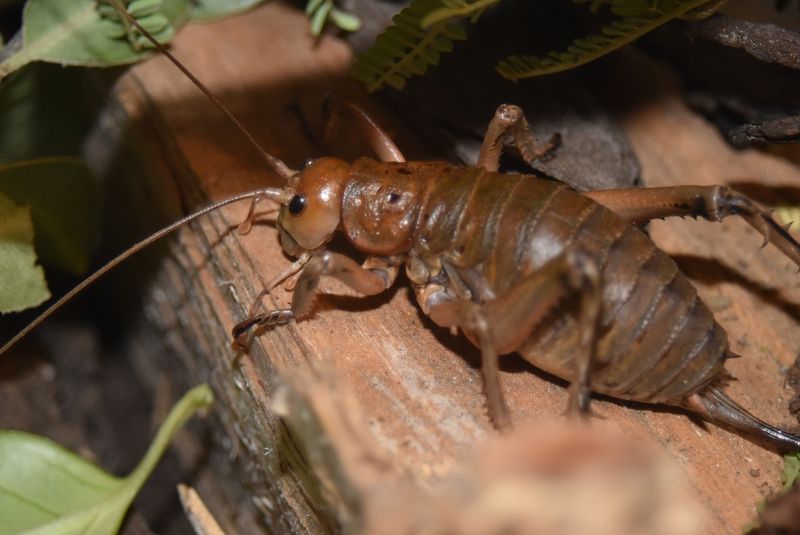
Though their appearance might suggest otherwise, Giant Wetas are primarily herbivores. Their diet consists of leaves, fruits, and other vegetation, which they consume with gusto.
This herbivorous diet plays a significant role in their ecosystem, as it contributes to the control of plant growth and the dispersal of seeds. Occasionally, they might consume insects, but this is not their main food source.
Their selective feeding habits further highlight their importance in maintaining the health and balance of their habitats.
Reproductive Cycle
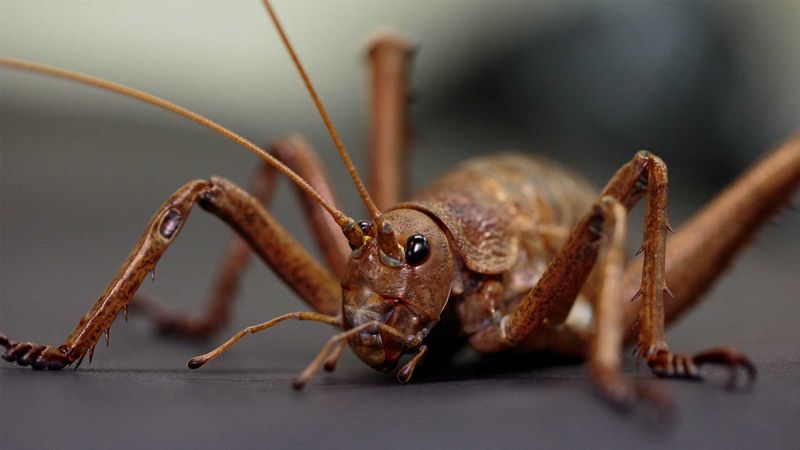
The reproductive cycle of the Giant Weta is a fascinating journey from egg to adult. After mating, females lay eggs in the soil, where they remain until hatching. Once emerged, the nymphs begin their development, undergoing several molts.
This process of growth is crucial for their survival, as each stage presents new challenges. The nymphs gradually acquire the characteristics of adults, ready to continue the cycle.
Understanding their reproductive behavior aids in conservation efforts, ensuring these remarkable insects thrive for generations to come.
Conservation Status
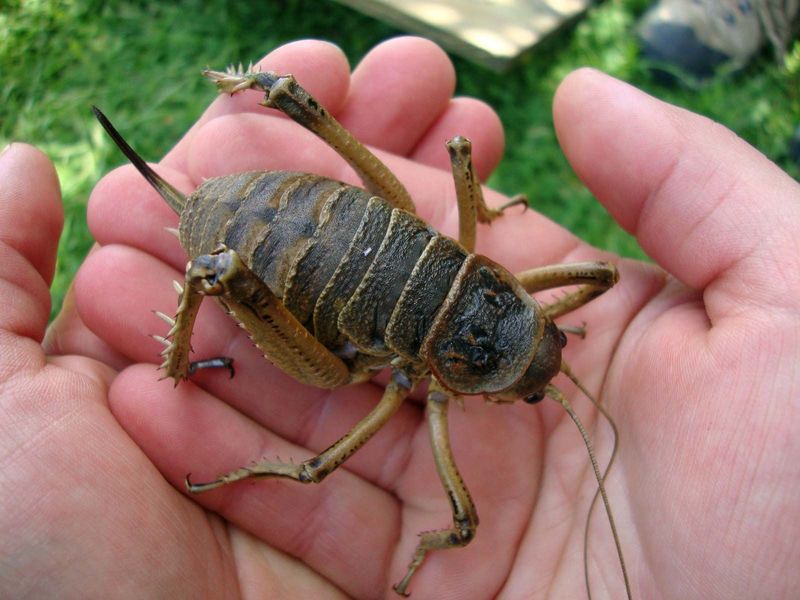
The Giant Weta’s survival is threatened by habitat loss and introduced predators. Conservation efforts focus on protecting their natural environments and controlling predator populations.
In New Zealand, dedicated sanctuaries and reserves serve as safe havens, ensuring their continued existence. Public awareness campaigns further bolster these efforts, emphasizing the importance of preserving this iconic species.
Through collaborative initiatives, researchers and conservationists strive to secure a future where Giant Wetas can thrive, highlighting the need for ongoing vigilance and support.
Cultural Significance
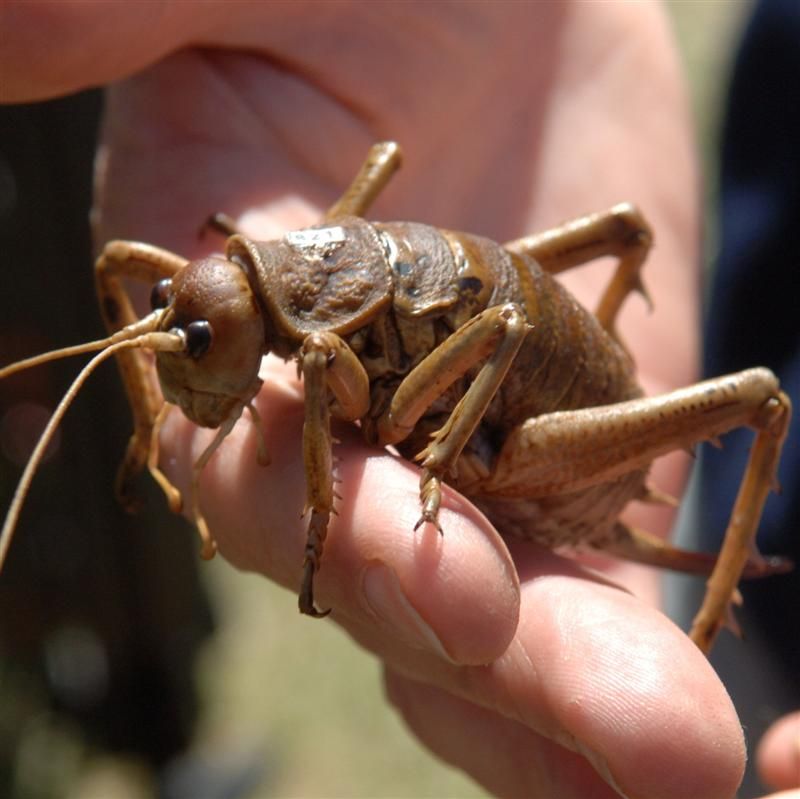
In New Zealand, the Giant Weta holds cultural significance, particularly among the Maori people. They are often featured in folklore and stories, symbolizing strength and resilience.
This cultural symbolism extends to various art forms, including carvings and paintings, where the Weta is depicted as a guardian of nature. Such representations reflect the deep connection between the Weta and the cultural identity of the region.
Understanding their cultural importance enhances appreciation for these unique insects, fostering respect and protection in their native lands.
Behavioral Traits
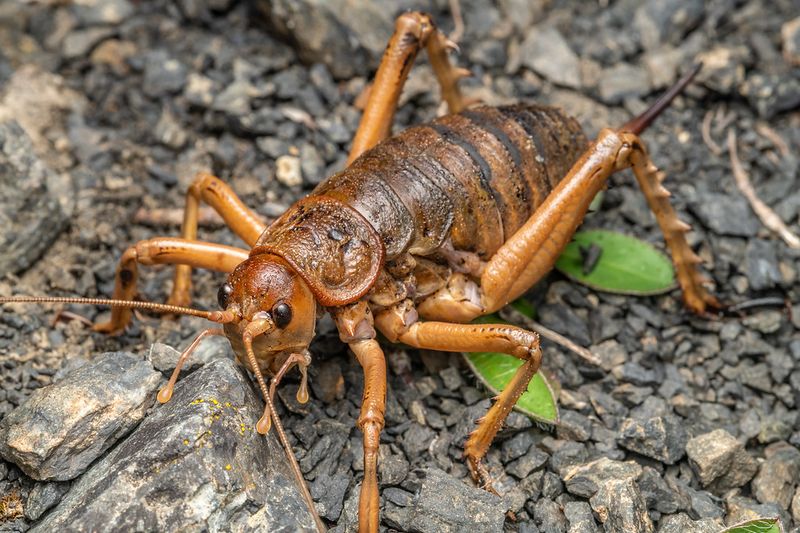
Giant Wetas exhibit intriguing behavioral traits, particularly when threatened. Their primary defense mechanism is to freeze, blending into their surroundings to avoid detection.
In some cases, they may use their powerful legs and mandibles to ward off predators. This combination of passive and active defenses has proven effective over time.
Observing their behavior in the wild offers insight into their survival strategies, contributing to a greater understanding of their role in the ecosystem and how they interact with other species.
Scientific Research
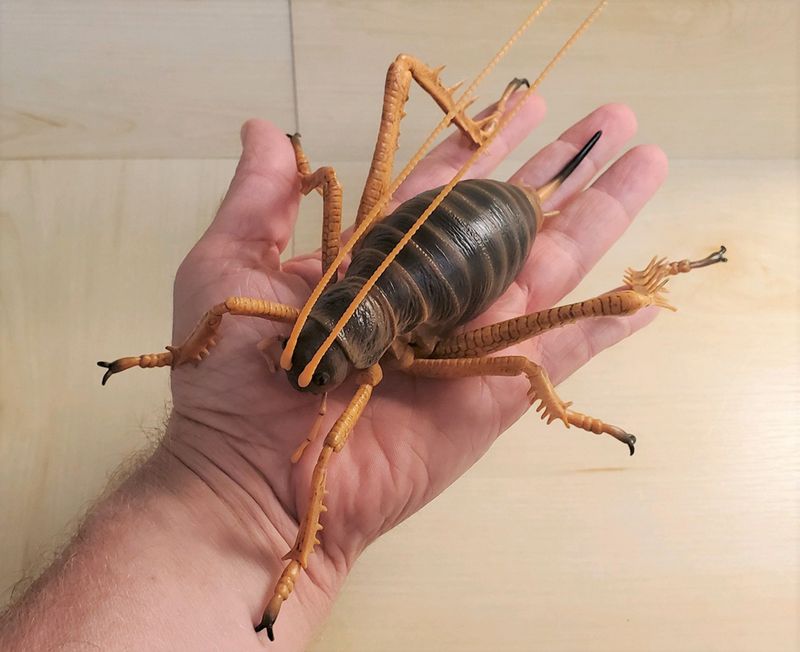
Scientific interest in the Giant Weta spans across various fields. Researchers study their anatomy, behavior, and ecological impact to gain insights into insect evolution and adaptation.
Their unique characteristics provide valuable data for studies on biodiversity and environmental changes. The Giant Weta serves as a model organism for understanding biological resilience.
Continued research not only advances scientific knowledge but also informs conservation strategies, ensuring the protection of this remarkable insect and its habitat for future generations.

